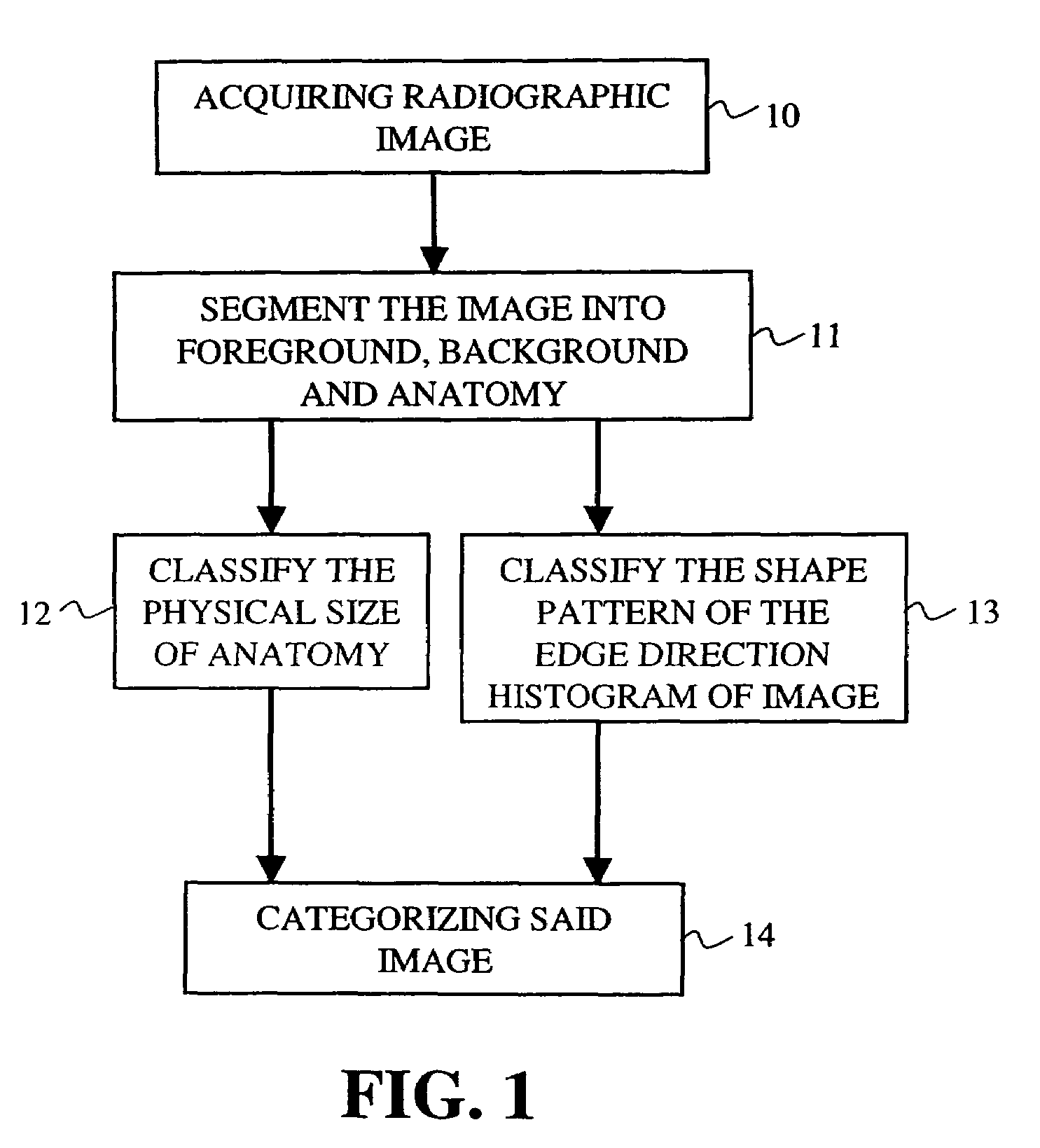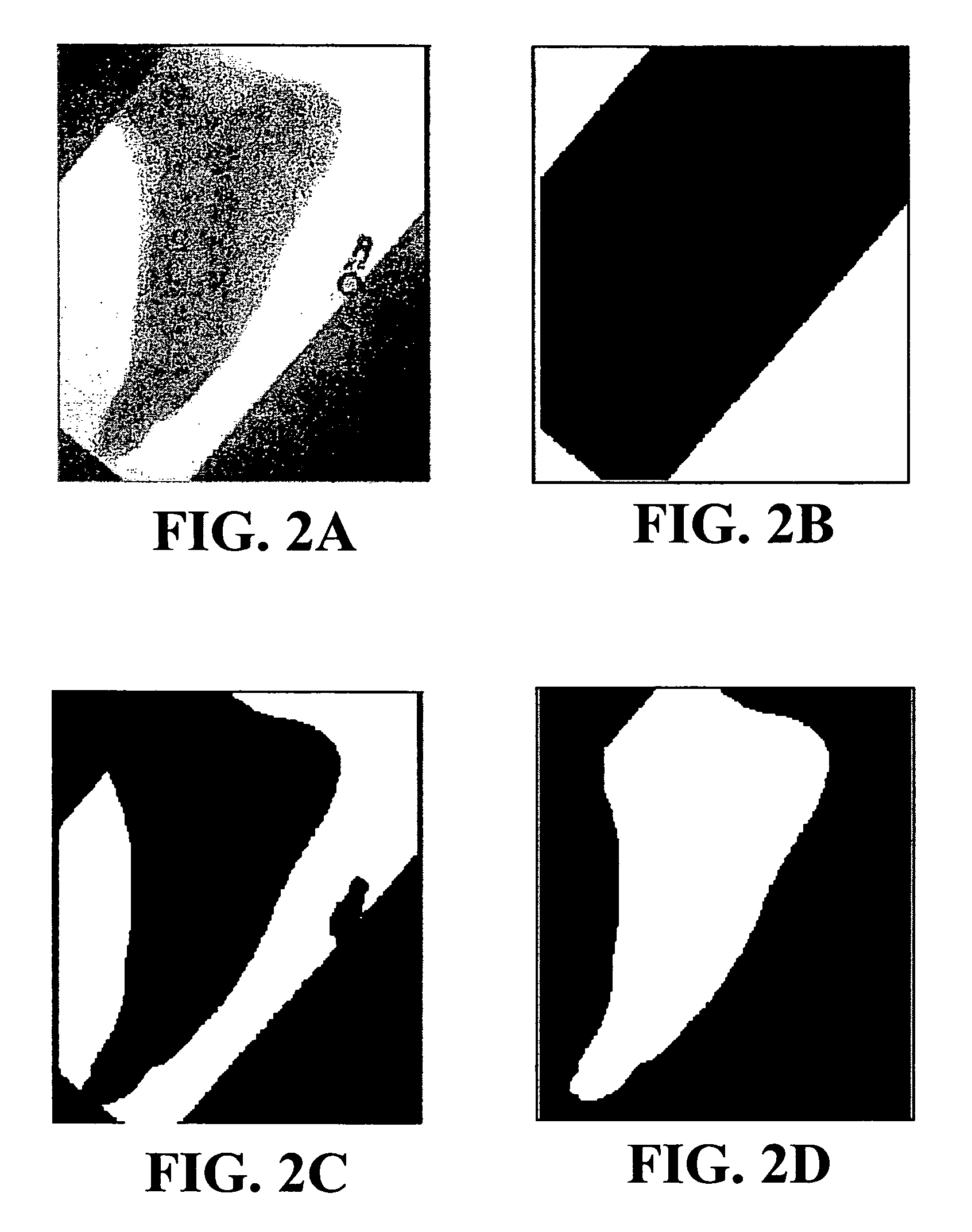Automated radiograph classification using anatomy information
a radiograph and anatomy information technology, applied in the field of automatic classification of digital radiographs, can solve the problems of difficult automatic and efficient processing of computers, affecting the efficiency of routine medical practice and patient care, and affecting the quality of radiographs, so as to achieve the effect of robust classification
- Summary
- Abstract
- Description
- Claims
- Application Information
AI Technical Summary
Benefits of technology
Problems solved by technology
Method used
Image
Examples
Embodiment Construction
[0026]The following is a detailed description of the preferred embodiments of the invention, reference being made to the drawings in which the same reference numerals identify the same elements of structure in each of the several figures.
[0027]The present invention discloses a method for automatically classifying radiographs. A flow chart of a method in accordance with the present invention is generally shown in FIG. 1. As shown in FIG. 1, the method includes three stages. In the first stage, the input radiograph (box 10) is segmented (step 11) into three regions, which are: a collimation region (foreground), a direct exposure region (background) and a diagnostically relevant region (anatomy). Then, two classifications are performed on the image: one is based on a size of the anatomy (box 12), the other is based on a shape of the anatomy (box 13). Afterwhich, the results from these two classifications are combined and the input image is categorized into one of classed, for example, ...
PUM
 Login to View More
Login to View More Abstract
Description
Claims
Application Information
 Login to View More
Login to View More - R&D
- Intellectual Property
- Life Sciences
- Materials
- Tech Scout
- Unparalleled Data Quality
- Higher Quality Content
- 60% Fewer Hallucinations
Browse by: Latest US Patents, China's latest patents, Technical Efficacy Thesaurus, Application Domain, Technology Topic, Popular Technical Reports.
© 2025 PatSnap. All rights reserved.Legal|Privacy policy|Modern Slavery Act Transparency Statement|Sitemap|About US| Contact US: help@patsnap.com



